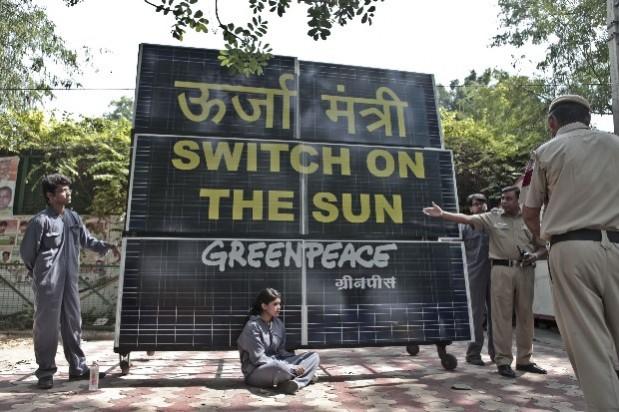
Summer and power-cuts go hand-in-hand in Delhi, with the capital depending on other states to meet its ever-growing demand for electricity.
However, with a positive spin, the Delhi Electricity Regulatory Commission has released a new set of net-metering guidelines that will allow for solar rooftops in Delhi and ultimately help combat the irregular electricity cuts and tariff increases.
With coal getting expensive and power companies passing on the increased costs to consumers, Delhi has witnessed a steep 45% hike in power tariffs within the last two years alone.
Moreover, in June this year, when temperatures reached a sizzling 47.8 degrees Celsius, the city tripped at 5,600MW, leading to a shortage of 400MW or 2-10 hours of power cuts across the capital. With solar rooftops, Delhi can tide over this unending loop of power cuts and tariff hikes.
Greenpeace India has endorsed the net-metering guidelines for solar rooftop announced by the DERC on Tuesday as these will allow every consumer to set up as many solar panels as his rooftop would allow, turning every Delhiite into an electricity producer, managing his own power house.
"After almost two years of waiting, DERC has been wise in taking-up the novel model of net-metering, which has proved successful both internationally and nationally for rooftop generation.However, we now hope that the DERC will soon announce a preferable tariff so that the demand and interest doesn't wear-off among the public," Anand Prabu Pathanjali, Campaigner, Renewable Energy, Greenpeace India, said.
With over 300 days of uninterrupted sunshine, Delhi is the ideal place to harvest solar energy. According to 'Rooftop Revolution: Unleashing Delhi's Solar Potential', a report released by Greenpeace last year, out of 700 sq km of Delhi's total built-up roof space, about 31 sq km can be utilized to generate 2,557 MW electricity.
The announcement of the net-metering guidelines comes at a time when the nation is focused on maximizing renewable energy to meet the country's energy demands. If the DERC and Delhi government maintain the momentum generated on realising solar rooftops, it can be guaranteed that the capital city would never fall back into darkness again.
Road Ahead for Solar Power in Delhi
| Power Points of DERC guidelines | Where it lacks |
| Gives full freedom to the user to put up any number of panels he can accommodate on the roof unlike previous guidelines that restricted the domestic user to just 1kW | A robust mechanism needs to be put in place for the systems which work on battery back-up so that reverse flow into the grid does not occur. |
| Gives the user flexibility to adapt a complete grid-tied mechanism as well as a grid-tied plus backup system | An equitable and self-sustaining mechanism is needed so that this policy guideline continues to attract rooftop generators for 15-20 years without any financial hiccups. |
| Ensures the units' carry-over period is for upto one year. | Emphasis needed on strict regulation of the quality of electricity so that unnecessary shortcomings could be avoided by the generator. |
| Ensures uniform and standardized net-meters for all users so that there is no chance to tamper the mechanism. | The maximum limit is determined by the maximum load the transformer can handle.This might make the first-cum-first-serve basis very competitive. |












